Attending Codemotion Madrid 2015
I’ve just come back from a trip to attend Codemotion Madrid 2015. This was my first time at a Codemotion conference so I didn’t know what to expect. I already had an idea of how I wanted to spend my time: I wanted to catch up with friends and go out for lunch or dinner together. I also wanted to meet new people.
2016 Barcelona will be hosting another Codemotion conference. I’m active in the community here so I’d like to be involved in it. I wanted to learn from Codemotion Madrid, I and was paying extra attention to the organisation and volunteers. What became clear soon is that hosting a conference for 2000+ attendees is not easy at all.
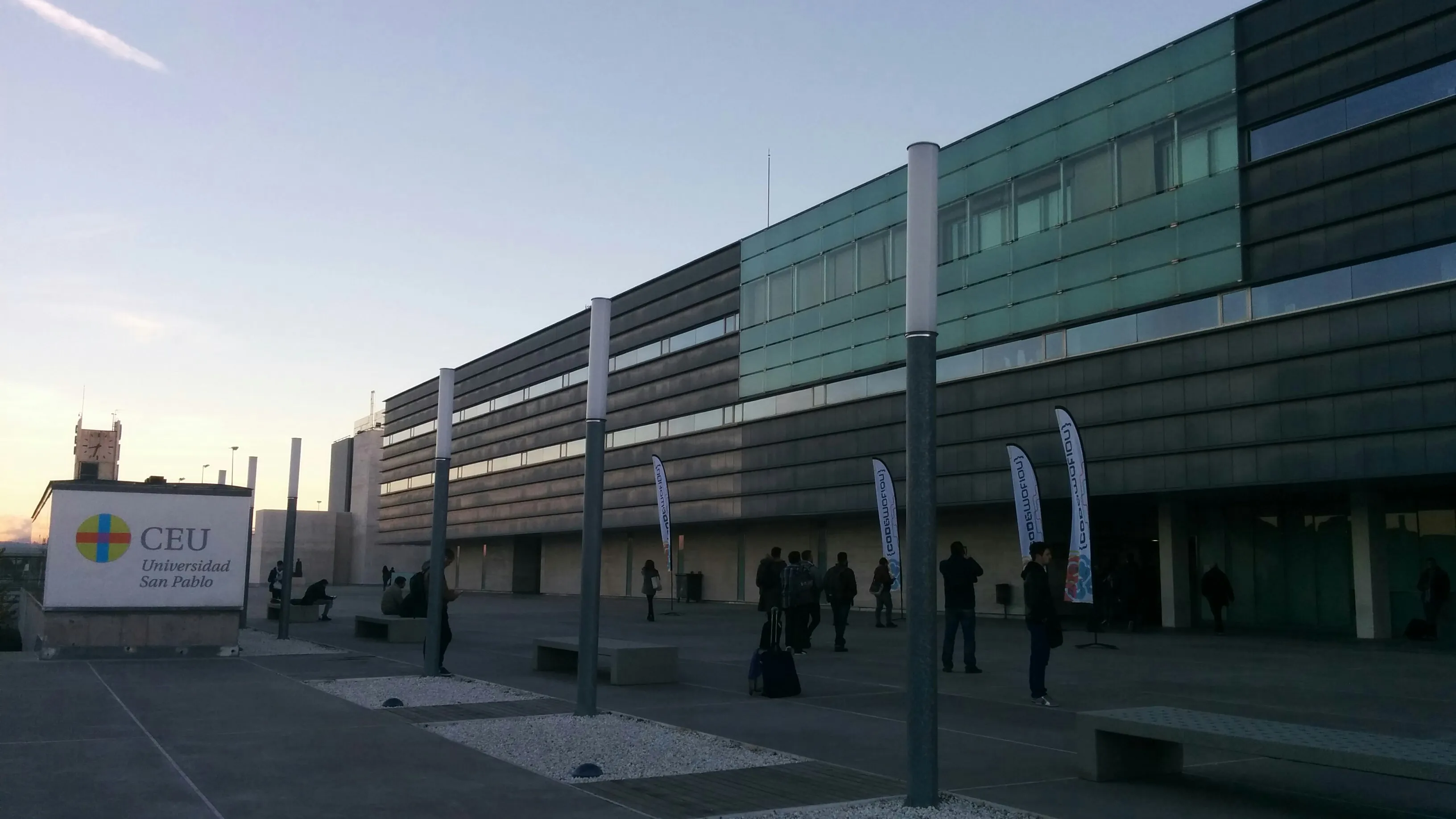
CEU Universidad San Pablo — The venue for Codemotion Madrid 2015
The place was great. There was a main hall for the registration and a big theatre for the main track. They also had some more small theatres and a bunch of classrooms for the rest.
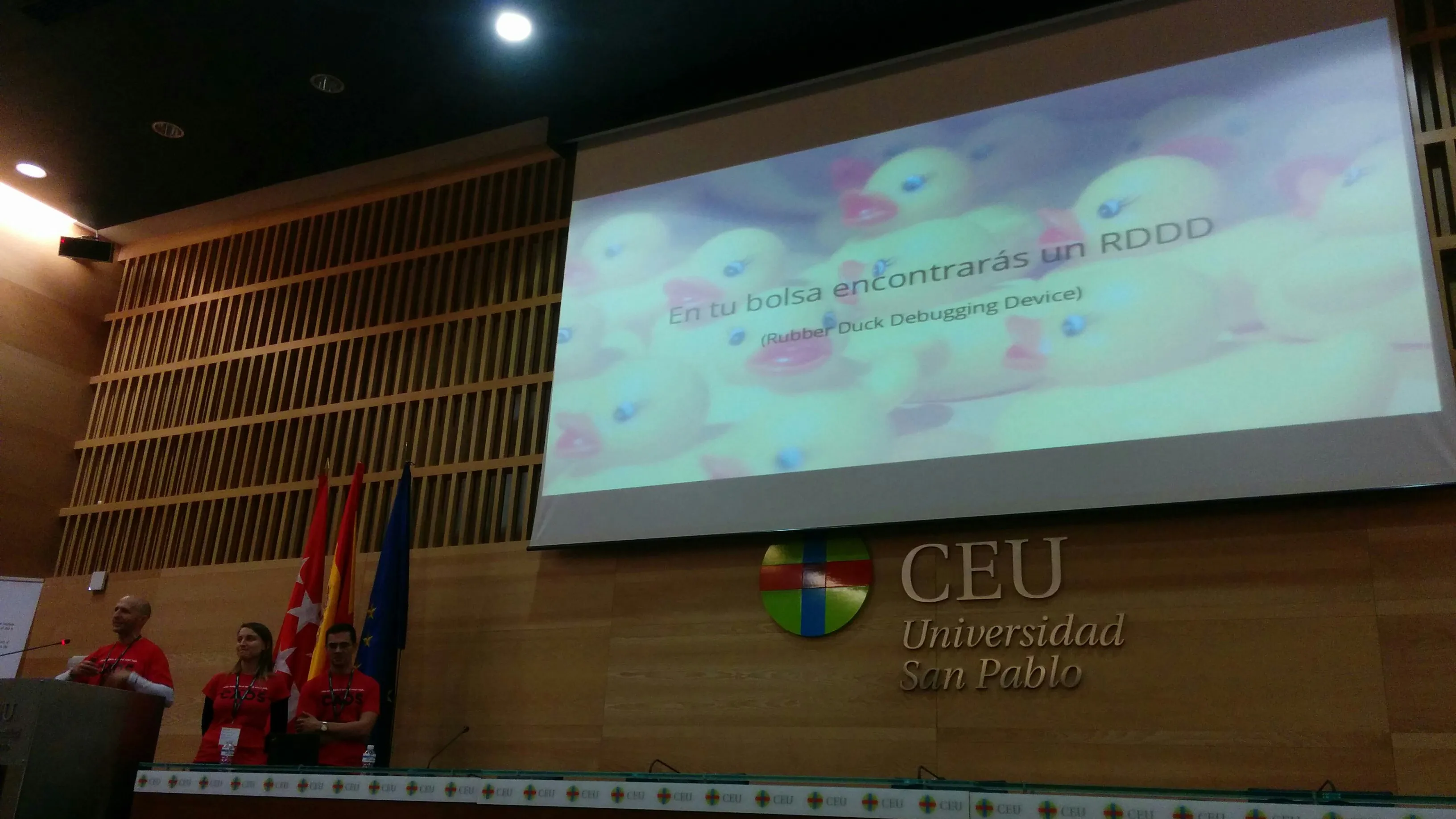
Nacho, Laura & Abraham — the main organisers
We got through the registration, collected our swag bag and the bracelet. Then we sat down at the main theatre for the presentation and the keynote speakers
Ismael Faro talked about IBM Bluemix and the Watson APIs. He had a small demo that used people’s tweets to compare their personalities. The demo is available at http://your-celebrity-match.mybluemix.net/ According to that I’m similar to @marcosmion. I don’t have a response to that :|
He also had a small display case with some of the new IoT microprocessors that IBM is building. Later, Nacho Cougil managed to snap great picture of it.
After that, Cristiano Betta talked about Braintree. About how it enabled companies to save the cultural barrier when accepting payments. He brought up an interesting problem that developers usually don’t take into consideration. The best way to sum up it is using this picture you probable have seen before:
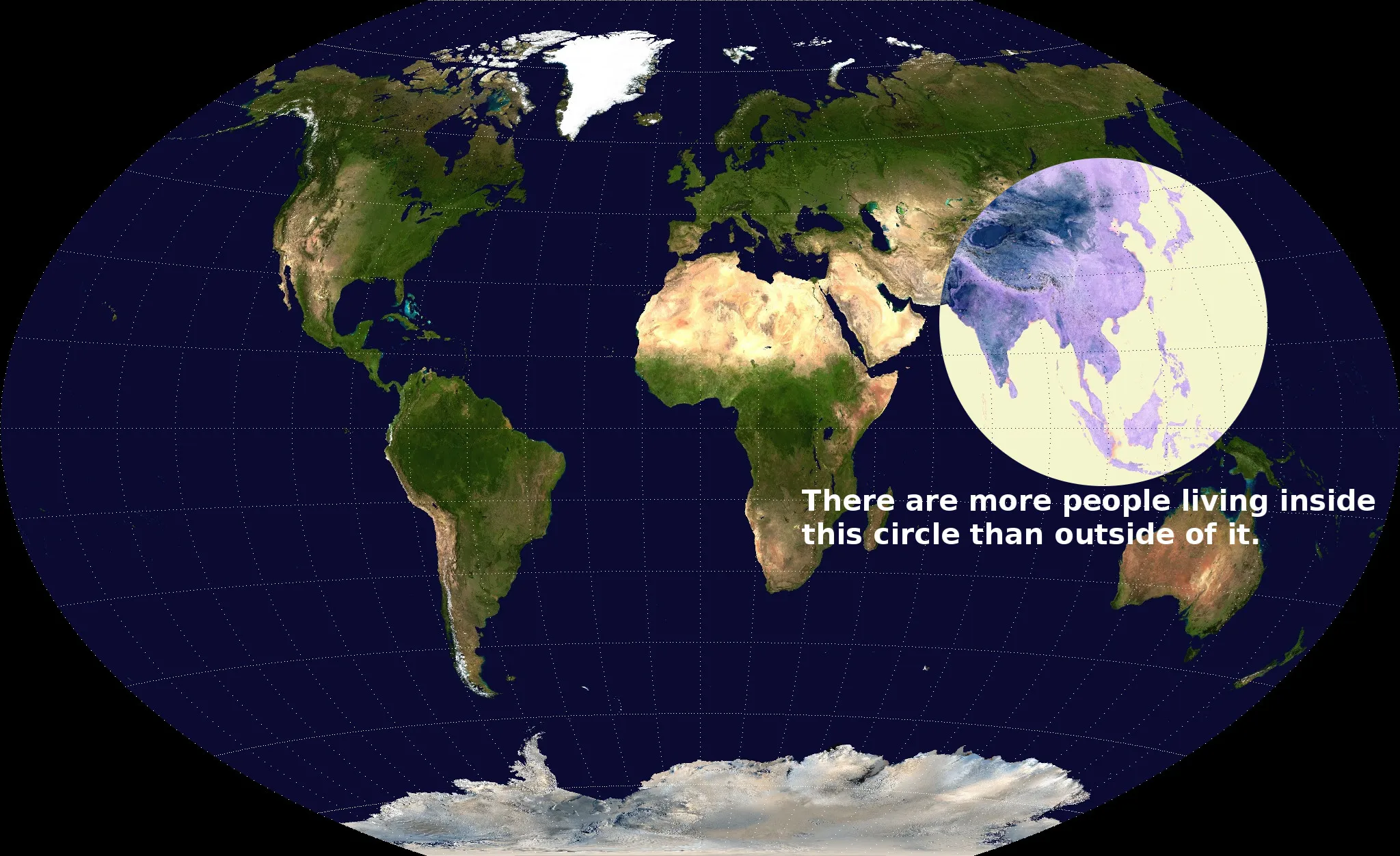
(source: /u/valeriepieris. Corrected projection here: by /u/BCMM)
Most of us developers live outside of that circle, mainly in Europe or the Americas. For us, having a credit card or even a PayPal account is just the norm. For the rest of the world, it’s not. For example, in Kenia, a lot of the population use M-Pesa, a system where people transfer and recieve money using SMS. I had already looked into M-Pesa after this year’s DroidCon keynote by Francisco Román. If your market doesn’t include emerging economies, that cultural barrier may not be there for you, but it can be a deal breaker when reaching places you know nothing about their financial culture.
The first talk I attended was by Javier Ramírez. This guy is fascinating. The first time I saw him a couple of years ago at BCNDevCon he was presenting a talk about Usable REST APIs. I think that talk it’s still pretty relevant today. His talk about High Availability and Distributed Databases was a hit (4.5/5 stars). He managed to introduce many concepts into 45 minutes of talk. He wrapped it up by recommending specific libraries and tools. If you missed it, go watch it now (in Spanish) .
I couldn’t get into the talk I wanted for the second slot. Instead, I headed out for the chill out zone. I played a couple of arcade games while getting to know some new people.
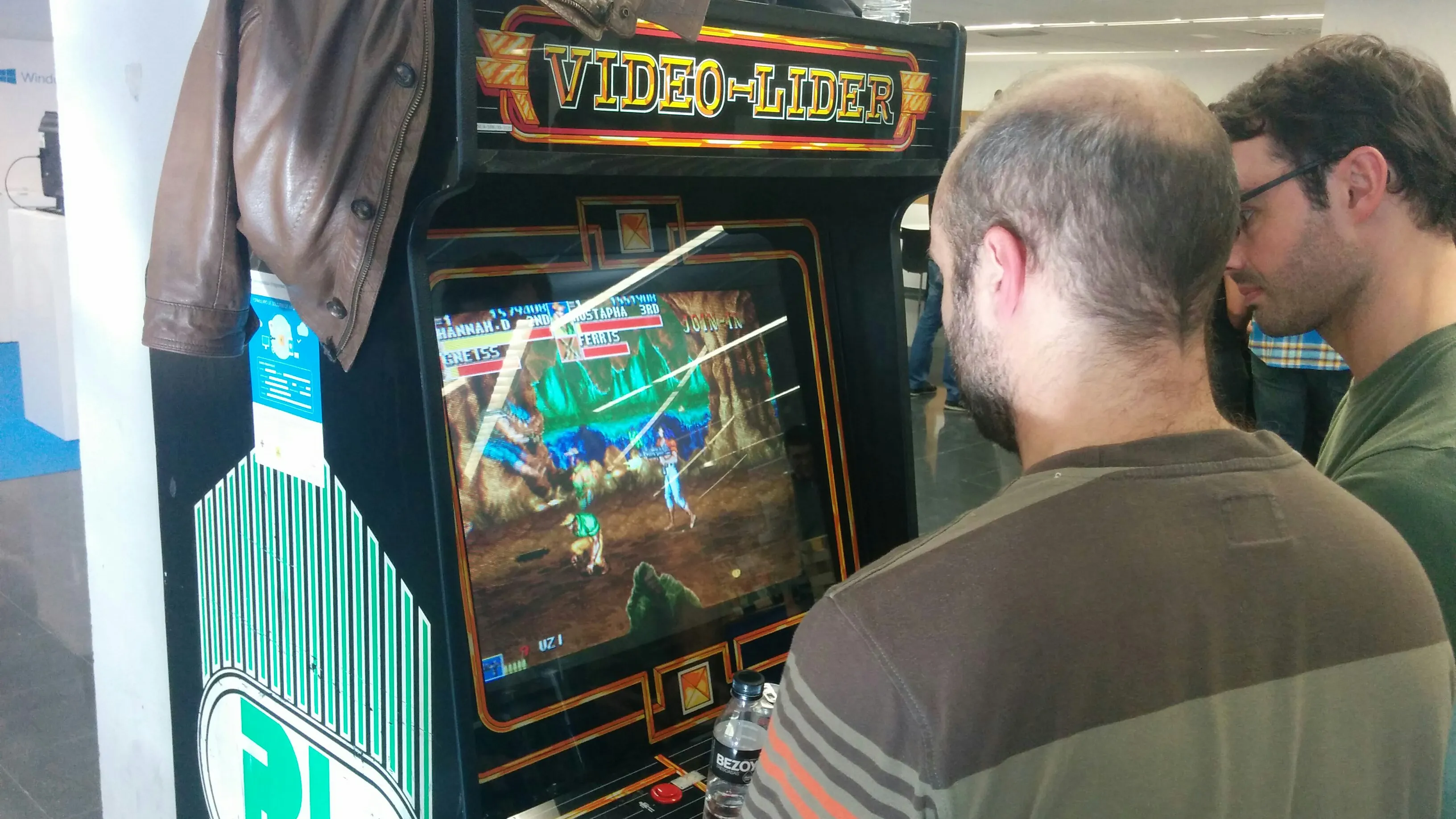
Mashing buttons
After that, there was a coffee break in a nearby building. Pastries ran out pretty fast. A company was tweeting about how they had lost a couple of devs in the fight for the pastries so they were hiring.
Next up was Joaquín Engelmo, speaking about loving your tests. He talked about writing them carefully so they wouldn’t come back to bite you in the ass. He had to wait with a full room for 10 minutes until the scheduled time to start his talk. He started cracking jokes and going into a semi-monologue. That got him a big applause before the actual talk had even started.
The talk itself was an overview of common coupling, readability and reliability problems. Every tenured developer should be familiar with those. You can watch it here (in Spanish).
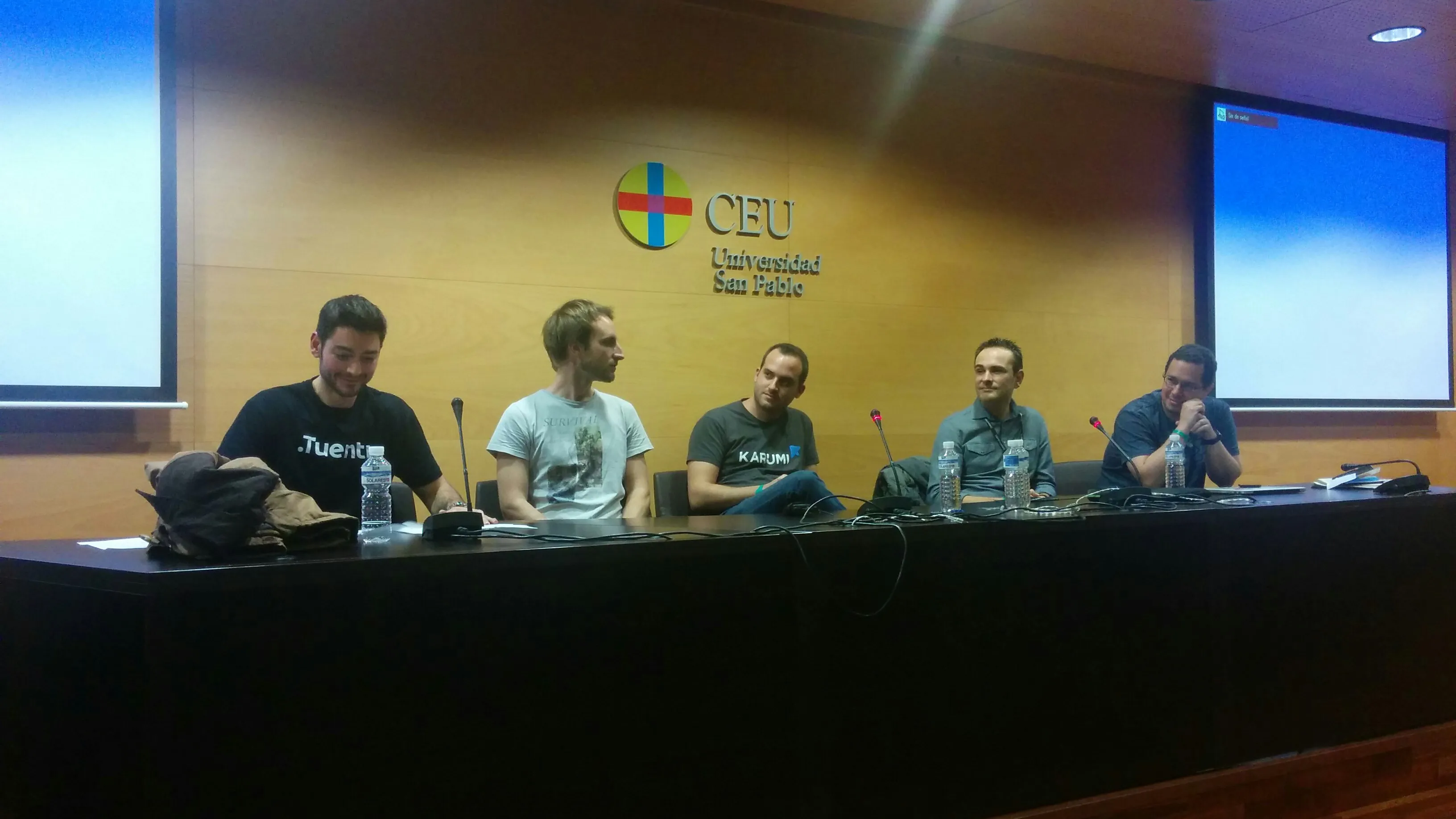
Joaquín Engelmo, Luis Ujía, Pedro Gómez, Ricardo Borillo and Yeray Darias
There was supposed to be a talk about something else, but they replaced it. Some speakers teamed up to feature a panel driven by questions from the audience and moderated by Jorge Barroso.
Most of the questions gravitated towards testing. I personally enjoyed a couple of stories told about messing up at work and breaking stuff. Everybody makes mistakes and I love to learn from others’ as well as sharing my own.
Then it was lunch time. We had regular lunch boxes. There were two sandwiches, water, a piece of fruit and a candy bar in there. It was okay for a conference with this many people.
The main problem was getting a seat on the bleachers. I ended up having lunch with Cristiano Betta over a playground’s wall. A young student approached us and asked what we where all doing there. I explained this was an annual Software Development conference. That’s when I realised we where taking up 12 rooms on a class day. I bet there were happy students because they didn’t have to show up for class. Or pissed of because they moved them to some other place.
After lunch I dropped by Saúl Molinero’s talk about Retrofit, Dagger2 and RxJava within a Clean Architecture. The bulk of the talk where code examples from his sample project. You can check out Saul Molinero’s Avengers on GitHub, among a lot of other goodies of his.
I missed the last two hours, nursing a headache at the hotel before meeting the rest of the Betabeers organisers for dinner.
Day two
My first talk of the day was by Pedro Gómez, “World-Class Testing Development Pipeline for Android”. It featured insights about Espresso, Robolectric, Mockito, MockWebServer, JUnit and Dagger. It was pretty good, at least for someone like me who is not a full-time Android developer.
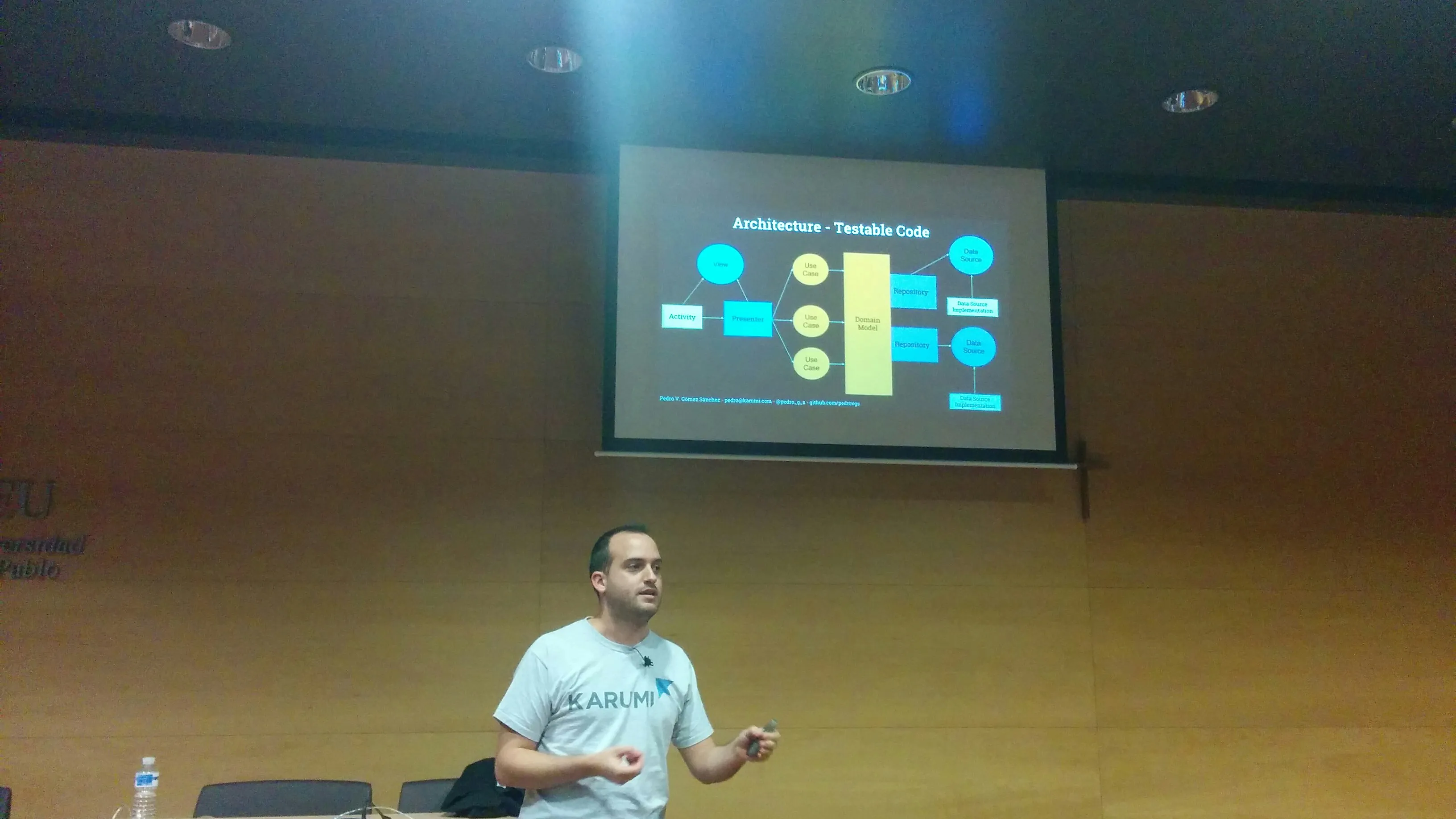
Pedro Gómez on his talk “World-Class Testing Development Pipeline for Android”
My next choice was Jorge Barroso’s talk “Programando en Diferido: get out of my thread” about threads and concurrency. He took a look at the common pitfalls of different approaches to threading and parallel computing. He compared, AsyncTask, Priority Job Queue, RxJava. He also talked about common problems like the use of libraries (e.g. Picasso) without paying attention to the default configuration.
I took a peek at the next talks but then I got side-tracked talking with some friends. We had lunch discussing how different Madrid and Barcelona are for a software developers . We talked about the community, the Startup ecosystem and the cost of living. The general agreement was that there’s a better quality of life in Barcelona. The main reason is the smaller area which translates into shorter commutes and tighter communities. We also have the Mediterranean Sea :)
After lunch I got into a workshop but it wasn’t very good so I left early as most of the attendees did. I talked to some more friends and some more speakers. Then I got recruited as co-organiser into a Google Developer Group (more on that soon).
I ended up leaving after that, but happy with the conference. Mostly because of the conversations in the halls, the chill-out area and the lunch area with rest of the attendees. Don’t get me wrong, the talks were good, but I was there mostly because of the people.
What went wrong
At moments, it felt really overcrowded. This is something only the main organisers can prevent. I don’t have any numbers, but I feel like the number of tickets sold was too close to the number of available seats. I heard many people complain about not being able to get a seat at the talk they wanted to attend. In my opinion, there should a bigger difference between the number of tickets sold and the number of available seats.
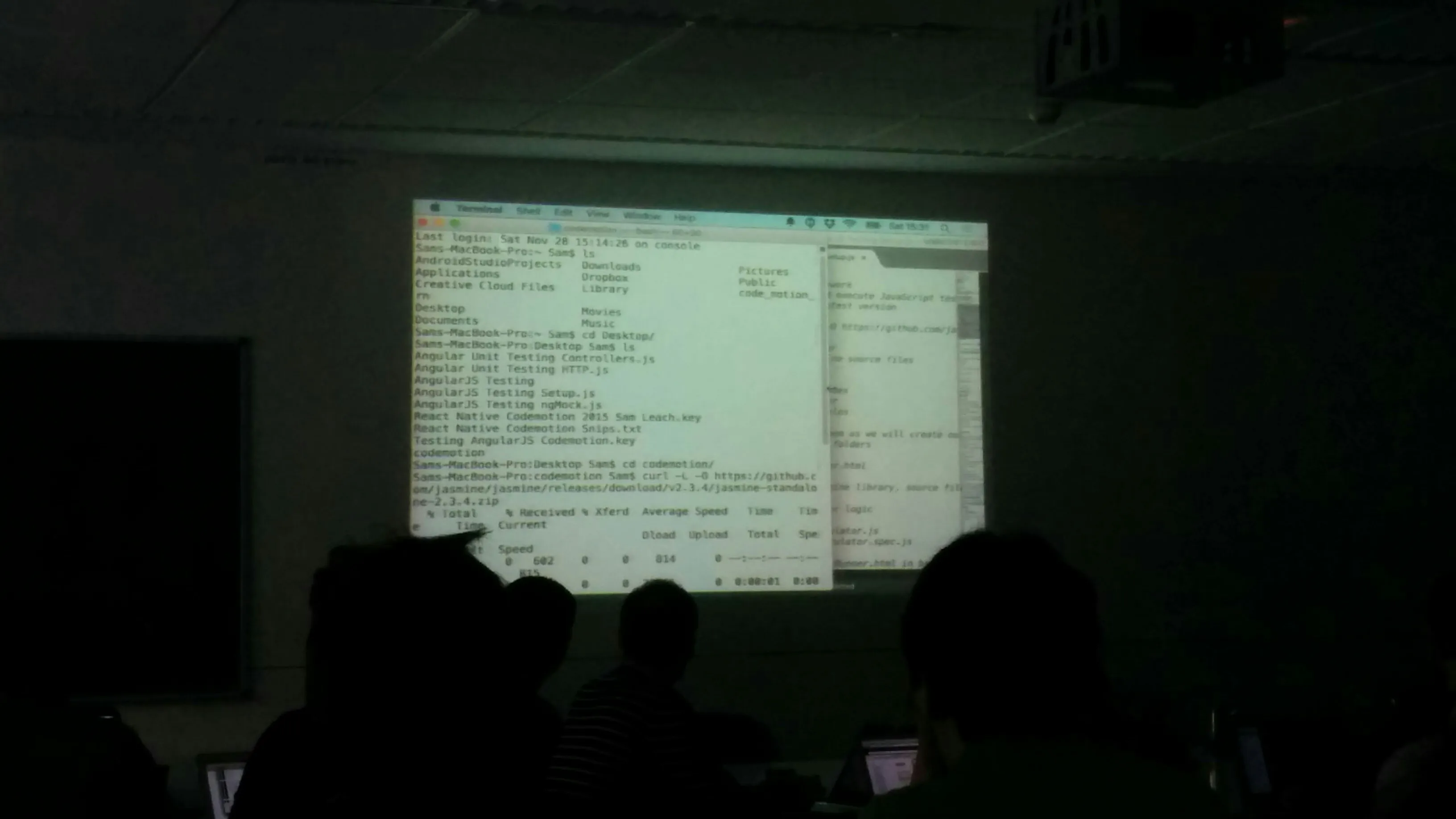
Another problem, which is very common in Spain, was the quality of some sessions. Some of the talks and workshops were just below conference level. I left a workshop within 5 minutes of it, as many others did. However, I do understand that judging abstracts is a pretty tiring work. It’s hard to filter 300+ submissions through few organisers but I think they could’ve done a better job.
A few weeks ago we had a meeting to start the plans for Codemotion Barcelona . We were told that the talk selection process was mainly done by the local communities supporting the event. Each community is supposed to have access to a voting system. They should help with the filtering. However, at the presentation the organisers said two of them made the final choice, and they had to review all the submissions. I guess both parts could improve on that for the next iteration of the conference.
I think 8 talk tracks + 4 workshop tracks is a bit too much. There are few venues that can hold that kind of conference. I think this is the reason the quality of some of the workshops and talks was not up to par. When you have to approve 150 of the 300 submissions you can’t be picky.

Plaza España at 8:00 AM.
What went great
The shuttle bus ride was 15 minutes. The venue was on the outskirts of Madrid but still well communicated. Still, Madrid is a huge city, so it took me 1.5 hours to get to my hotel when I left early and used the public transport. If had waited for the conference bus it would’ve been only 45 minutes.
The chill-out zone was nice. We had a couple of arcade machines in free to play mode, a giant Jenga, coffee and refreshments.
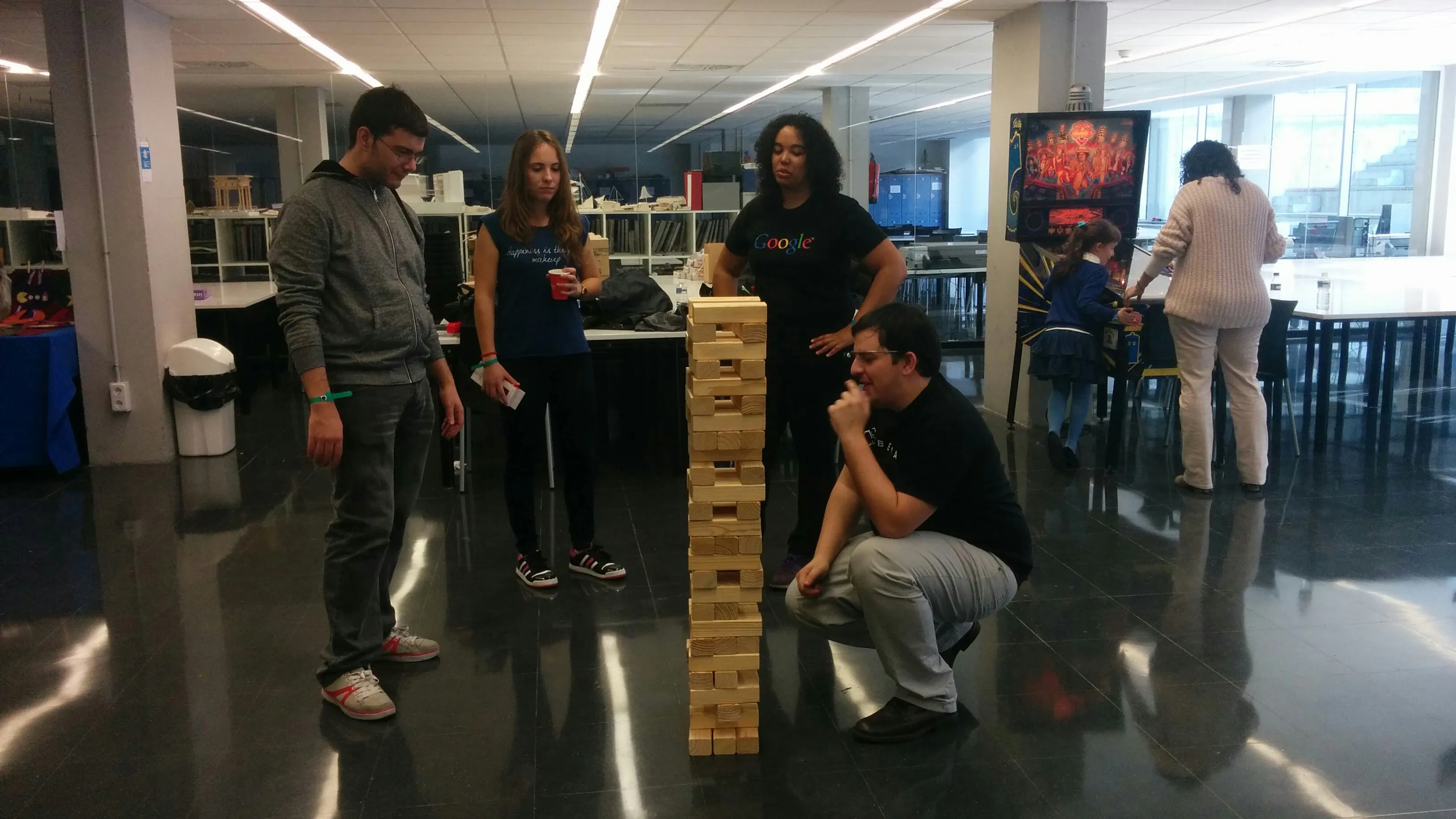
Chilling out
The feedback feature on the agenda is just great. People rated and commented on the talks really quickly. You can actually see which talks bombed and which ones rocked.
They recorded a ton of the talks. This is not cheap at all, and it’s not easy to produce and release. Some conferences take weeks to publish their videos and playlists. Codemotion Madrid was publishing videos the same day the talk was given. That was pretty impressive.
What’s even better, they announced which talks were going to be recorded. That way, you could choose to forgo one of those and attend a different one. You didn’t have to worry about missing an interesting one. Me and my friends took advantage of this a couple of times.
They had live streaming! And it was free! This was a huge plus for me. I can’t always attend all the conferences I want to. By the time the videos get published, the bulk of the conversation has already gone by. This way, people catching the live stream can join in on the fun along with the people attending.
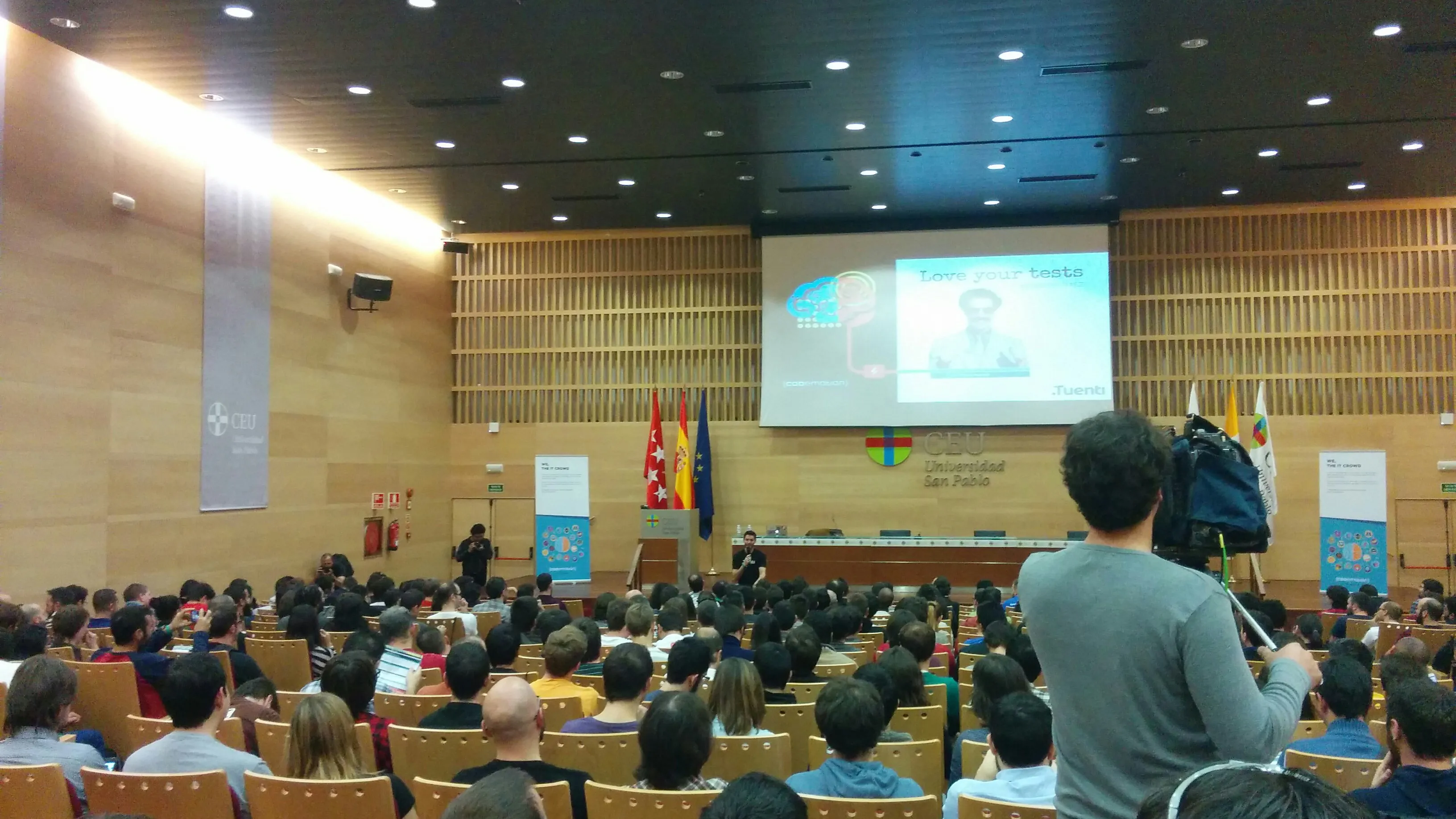
Recording the talks
They gathered all the resources in the agenda. You can access the slides and video for most of the talks right now. It’s not uncommon to have to “go fishing” for the slides that go along recordings of talks. I love that I don’t have to do this.
Closing thoughts
I’m definitely attending next year’s Codemotion Madrid. I had a blast, I met a ton of new people and enjoyed every talk I picked except for one.
2016 will be the first for Codemotion Barcelona, and I want it to succeed. I’ll try to get as close as possible to the organisers and to help them avoid making similar mistakes.